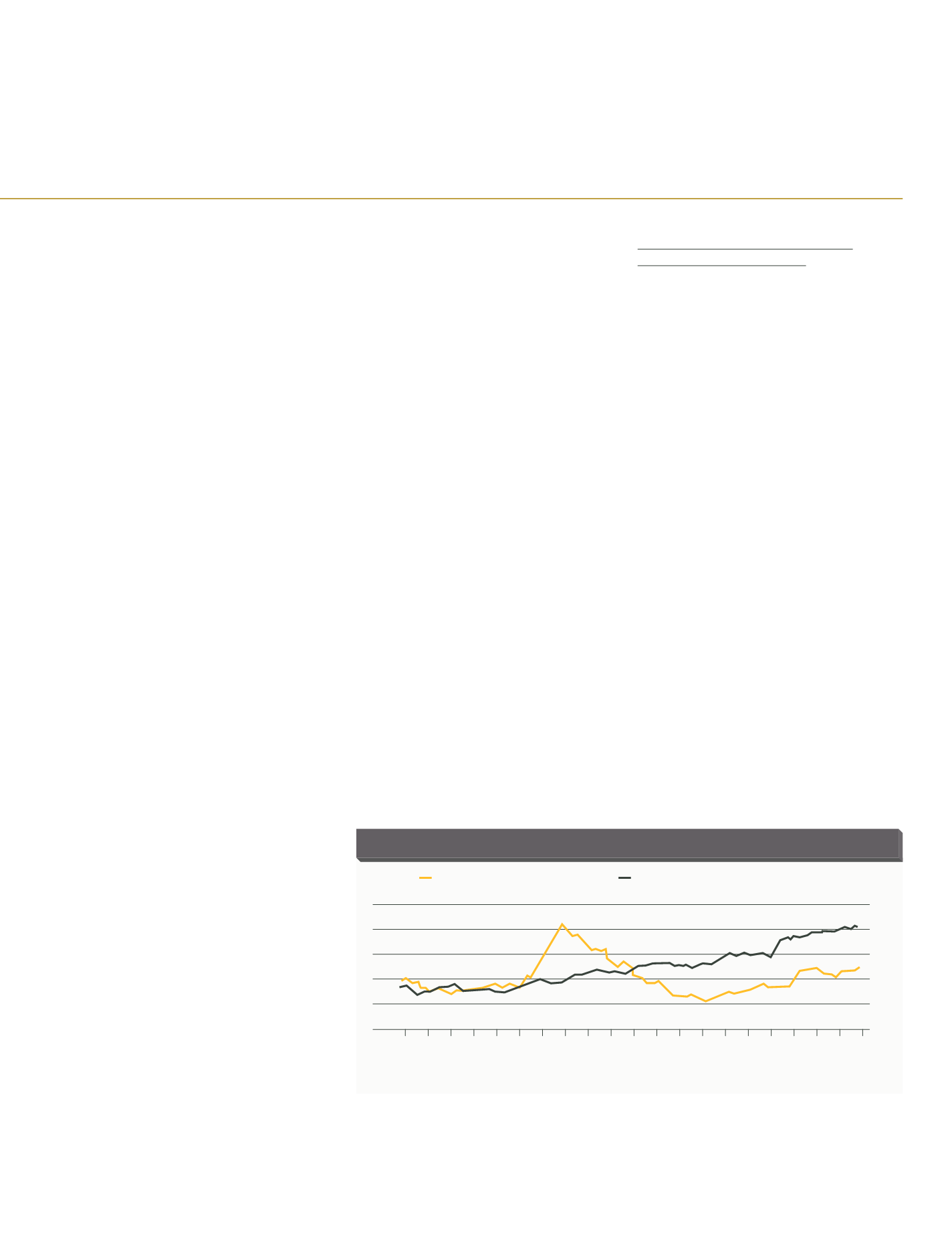
31
PART I: INTRODUCTION
credit card spending and consumer loans, as
well as household consumption. The rise in
household consumption observed from the
first quarter of 2015 onwards was related
to the partial relaxation of the said macro-
prudential measures in early 2015. This increase
in household consumption expenditure were
crucial in reaching higher growth in the first
nine months of 2015 compared to the prior
year. Another key factor was the recovery of
the agriculture sector, which after contracting in
2014 due to adverse weather conditions such as
drought, enjoyed better conditions and the base
effect in 2015. As such, although it accounts for
a small share of GDP, agriculture figured among
the fastest growing sectors. On the other hand
manufacturing, considered to be the driving
engine of growth, made a strong start to the
final quarter of the year, promising to make a
significant contribution to growth.
Furthermore, now that election-related
uncertainties are over, investment has gained
momentum, construction -which has spill-
over effects in many other sectors- is seen
to recover, and the export performance is
improving, all of which suggest that the
economy will fare better in the coming period.
As such, the Turkish economy is expected to
close the year 2016 at a 4% growth rate, which
corresponds to the objective set in the Medium
Term Program.
THE UNEMPLOYMENT RATE STOOD AT
10.5% AS OF OCTOBER 2015
As of October 2015, the unemployment rate
stood at 10.5% according to not seasonally
adjusted data and at 10.6% according to
seasonally adjusted data. As such, the
unemployment has hit its highest level
since March 2015. Despite the recovery in
economic activity in 2015, the expected drop
in unemployment has yet to materialize.
However, according to seasonally adjusted
data for October 2015, agriculture, industry
and services sectors increased employment
at rates above historical averages.
The improved growth performance in the year
2016 is expected to bring down unemployment
levels. In case the expansion in the workforce
seen in recent years especially due to higher
participation rates among women continues
in 2016, the drop in unemployment will
remain limited. Furthermore, the hike in the
minimum wage could slightly increase informal
employment, leading to some increase in
unemployment figures.
As for private sector investments, there was a
slowdown in the third quarter, which however
was compensated for by the rises in the first
two quarters.
In the first nine months of 2015, there was
a 1% drop in exports versus a 1.4% increase
in imports, year-on-year. The depreciation
of the TL in 2015 in comparison to 2014 had
a negative effect on exports while bringing
imports up. As such, net exports, which had
made the biggest contribution to growth
in the first nine months of 2014, had a
negative effect on growth in the first nine
months of 2015.
The service sector, on the other hand, accounted
for 59.1% of GDP in 2015, in an increase of
4.4% year-on-year. In the first nine months
of 2015, the biggest contribution to growth
came from the service sector, with 2.61 points.
Finance and insurance activities, part of the
service sector, continued their ascent which
began in the first quarter of the year and
contributed 1.34 points to growth, by expanding
10% year-on-year in the first nine months. In
the first three quarters of 2015, agriculture grew
8.9% year-on-year. Although it accounts for a
small share of GDP, agriculture became one of
the fastest growing sectors and contributed 0.82
points to GDP growth during the said period.
After contracting in 2014 owing to drought and
adverse weather conditions, agriculture could
make a higher contribution to growth in 2015
owing to a returned to normal in the weather
and the base effect from the last year. As for
manufacturing, which grew by 3.5% in the first
nine months of 2014 to become one of the
biggest contributors to growth, grew by 2.5%
year-on-year in 2015 and thus made a smaller
contribution to growth.
Although GDP growth in real terms was weaker
in the first quarter of 2015 than in 2014, the
growth performance gained momentum in
the second and third quarters. As a result, the
Turkish economy grew by 3.4% year-on-year
in the first nine months of 2015, beating most
expectations. The macro-prudential measures
adopted by public authorities in the beginning
of 2014 to limit domestic consumption were
effective in slowing down the growth in
UNEMPLOYMENT RATE
(%)
16
14
12
10
8
6
55
50
45
40
Unemployment Rate (Seasonal Adjusted, %)
Labor Force Participation Rate (Seasonal Adjusted, %, right axis)
Source: Bloomberg
Oct 05
Apr 06
Oct 06
Apr 07
Oct 07
Apr 08
Oct 08
Apr 09
Oct 09
Apr 10
Oct 10
Apr 11
Oct 11
Apr 12
Oct 12
Apr 13
Oct 13
Apr 14
Oct 14
Apr 15
Oct 15


